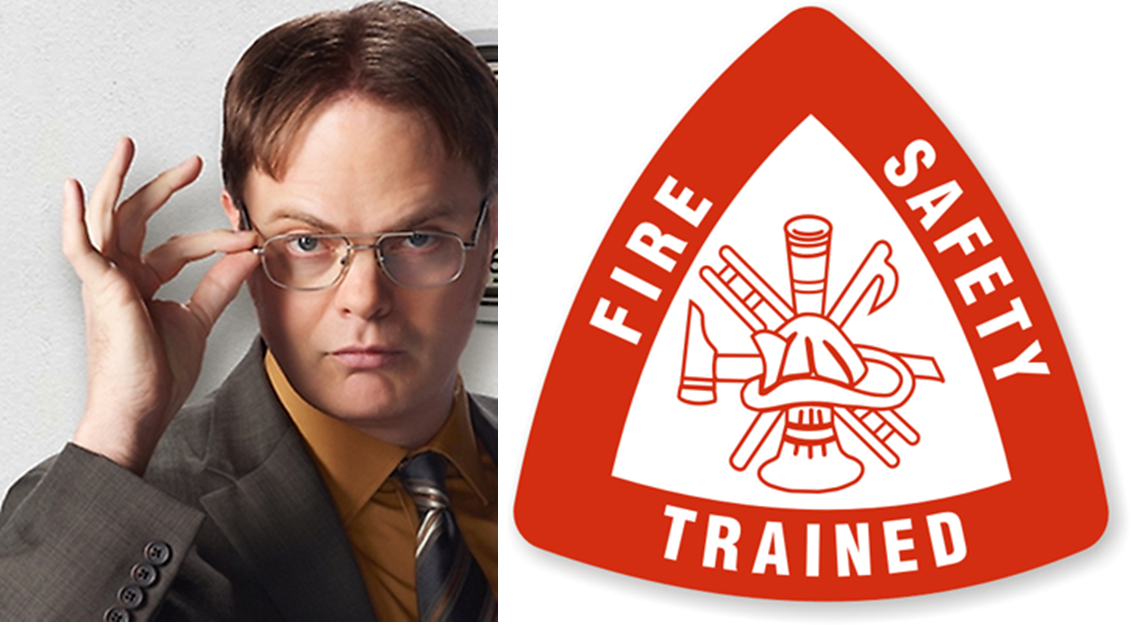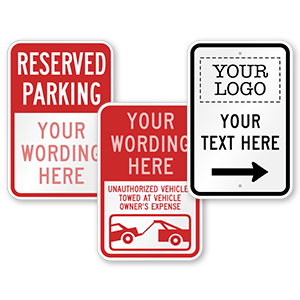Dwight Schrute’s office fire drill tested for OSHA safety compliance
 Dwight Schrute meets fire safety training. (Photos via NBC and Myhardhatstickers.com)
Dwight Schrute meets fire safety training. (Photos via NBC and Myhardhatstickers.com)
9/24/2012 — Dwight Schrute, Assistant (to the) Regional Manager at Dunder Mifflin, trained in the arts of surveillance, karate, and beet farming, volunteer sheriff’s deputy, and bed and breakfast proprietor, knows a lot about responsibility. When Dwight Schrute was put in charge of training Dunder Mifflin’s office personnel in fire safety skills in the episode Stress Relief, his boring PowerPoint evoked little interest or response. Not to be deterred (this is, after all is the man who only lost his grade school spelling bee by misspelling the world “failure”) Dwight engineered another kind of fire safety training…one that involved actual fire.
As Dwight knows, fire safety is a serious matter for workplaces—and there are specific rules set by the Occupational Safety and Health Administration (OSHA) to ensure safe evacuation. This week, we’re taking a look to see how Dunder Mifflin of The Office measures up to fire safety standards.
People learn in lots of ways, but experience is the best teacher.
The Good:
“Fire, oh my goodness, what’s the procedure?”
Look for the exits.
OSHA requires that “every workplace must have enough exits suitably located to enable everyone to get out of the facility quickly.” If the number of employees, building size, occupancy, and workplace arrangements make it difficult for employees to evacuate, more than two exits are required by § 1910.36. In this clip, Dunder Mifflin seems well equipped–we see at least three exits (four, if you count the ceiling).
Touch the door handle to see if it’s hot.
Dwight is right: feeling the temperature of the door handle is a good way to gauge whether there’s a fire blocking that exit—smoke may not always be a clear indicator of where fire is, despite the old adage. Testing the handle is better than opening a door to look out, which could allow the fire to spread.
If you can’t get out, call for help from a window.
Michael instinctively goes to the window and yells for help, which is proper procedure—although defenestrating an overhead projector is not.
Use a damp rag to cover the mouth.
According to the Federal Emergency Management Agency (FEMA), fire produces toxic gases which can make you feel drowsy and disoriented—the heat and smoke are also dangerous to your lungs. Dwight is right—placing a damp cloth over your nose and mouth can help prevent damage.
911? Anybody?
Use the surge of fear and adrenaline to sharpen your decision-making! Calling 911 or other local emergency services should be an immediate step in fire safety.
Dwight is not right. OSHA mandates that fire exits are never obstructed. (Images via Woman’s Day and Mydoorsign.com)
The Bad
Have a planned, preferred means of alerting employees of a fire emergency.
It’s a standard of OSHA’s that each employer have a preferred means of alerting employees to a fire emergency, and the emergency alarm system must be available throughout the workplace. Voice communication is ok—along with bells, whistles, or horns—but there is clearly not a set Dunder Mifflin procedure, as Pam ineffectually informs the office of billowing smoke by gaping and stammering.
Exits must not be obstructed.
OSHA mandates that fire doors may not be blocked or locked with employees inside. After inserting three door jambs and knocking off the door’s key handle with a hammer, it’s fair to say Dwight violated this federal regulation.
Employees must be trained in the use of portable fire extinguishers.
OSHA does not require portable fire extinguishers in every work place—but if you have them, you must provide hands-on training to familiarize workers with the equipment. There’s at least one fire extinguisher clearly in sight (1:12), but it is not incorporated into the drill. Rather, Dwight pulls the fire alarm…which only serves to heighten the confusion.
Dwight is not right. OSHA regulates that a distinctive and perceptible alarm signal is planned and communicated by employers. (Images via MySafetySigns.com and TV Worth Watching)
Nobody gets hurt—well, unless you count Bandit or Stanley—so overall, the good outweighs the bad in Dunder Mifflin safety training. Though Dwight takes “hands-on” safety training a bit too literally, we’ll give The Office a SmartSign safety grade of B-.
Be prepared! Take our fire safety quiz. It’s full of helpful tips, and requires a little less…commitment…than Dwight’s methods.
C. Stebbins
















